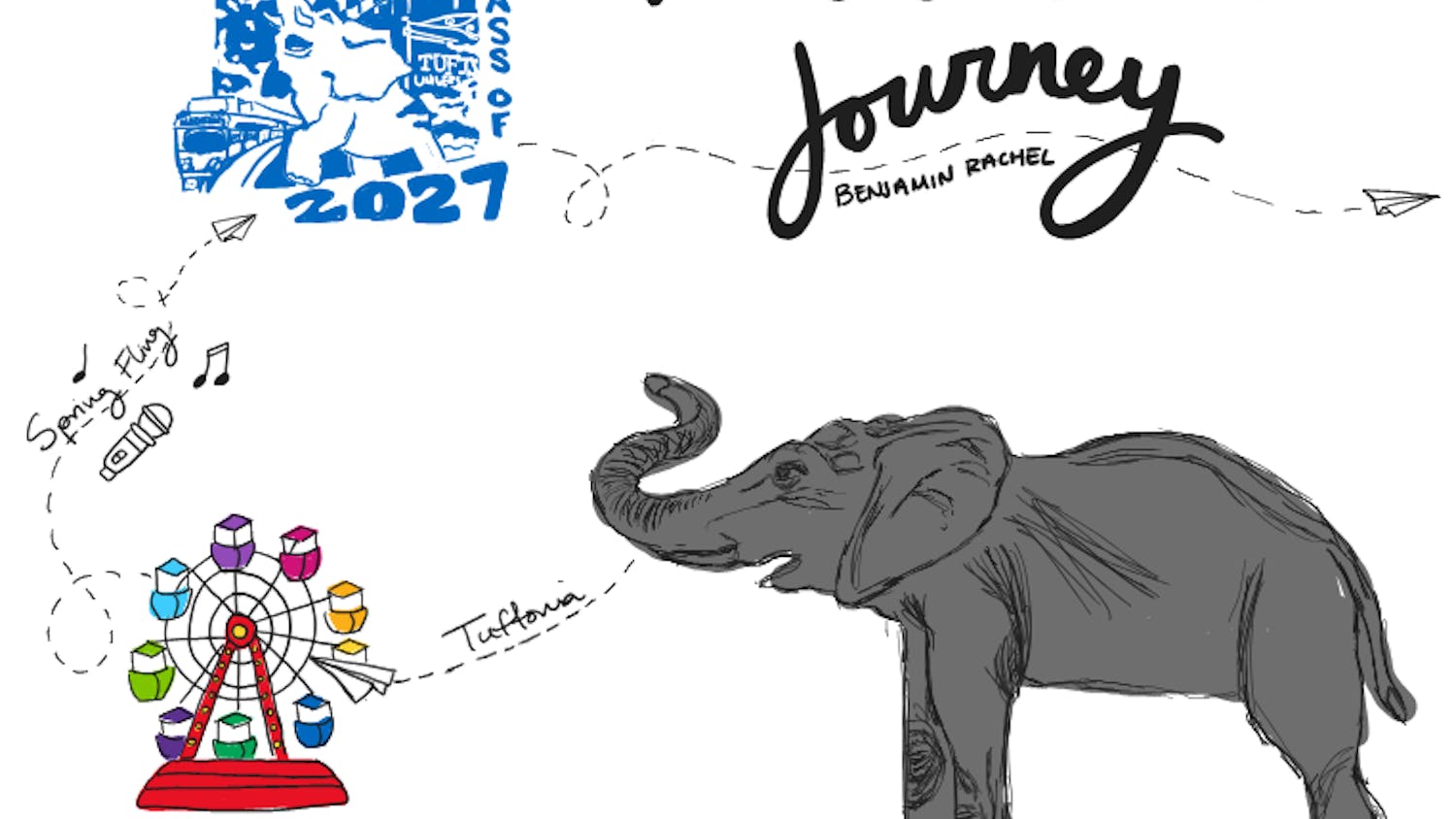Many students may have heard of the pinewood derby, or of the rigors of achieving the Eagle Scout rank. Perhaps they even know some Boy Scouts or have been directly involved in the organization themselves. According to a recent report published by the Tufts Character and Merit Project (CAMP) Study, researchers have found that involvement in the Boy Scouts of America (BSA) programs could have a positive impact on youths’ character development. Study participants involved in Cub Scouts demonstrated higher levels of growth in several areas, including helpfulness and trustworthiness, in comparison to their peers who were not involved with BSA.
Founded in 1910, BSA, with its 2.5 million membersbetween ages seven and 21, is one of the nation’s largest "value-based youth development programs," according to its website. For its study, CAMP chose to focus on BSA’s Cub Scout program members between the ages of six and 10. During the three-year study, CAMP collected data from over 1,000 students, measuring six traits: hopefulness, helpfulness, obedience, cheerfulness, kindness and trustworthiness
According to the CAMP study’s principal investigator Richard Lerner, a child development professor and Bergstrom chair in Applied Developmental Science, the study began in 2012 as a collaborative effort involving BSA and the John Templeton Foundation, which supports research in character virtue development in the framework of stock investor John Templeton's personal philosophies, among other areas.
Lerner explained that the project began after he was approached by the head of the Cradle of Liberty Council, the BSA council for the greater Philadelphia area, to conduct research on the impact of scouting on character development.
Dan Warren, the recruitment and sample manager for the CAMP Study, said project leaders chose these qualities because they reflected the common interests of BSA and the John Templeton Foundation.
“There is theScout Oath and [Scout] Law, which represent the ideals of the organization," Warren, a doctoral student at Tuftsand a program analyst for BSA, said. "They happen to overlap a lot with John Templeton's character virtues.”
In order to go about quantifying these qualities, the team developed a system of question items and interviews, according to Jun Wang, the project manager for CAMP who worked on developing this scale. Study leaders were careful to choose sample groups that reflected Boy Scouts’ national demographics, and they gathered a control group of non-Cub Scouts that could be used to evaluate the effects of scouting on development.
“When we do this research, we very carefully get a comparison sample, who are exactly the same in every theoretically related way -- obviously age, sex, but also race, religion, geographic area, socioeconomic status,” Lerner said.
Wang said the study questions used to measure the boys’ positive qualities were adapted from a rating scale usually used to measure personality characteristics in older children. Because it is often difficult to interview younger children as they do not always understand precisely what each rating means, the team also conducted separate qualitative research, according to Wang.
“[The development of the system includes a]very elaborate process of coming up with items first that were used to get at these ideas among older kids, then a process of trying to adapt them down in age level, figuring out if the kids actually understood them, and then running pilot research,” Wang said. “Because if they understood [the items], there should be more than random answers. There should be something systematic.”
Wang said this qualitative work, mostly conducted through interviews in which researchers would sit down with the children to determine their level of understanding for each of the items, helped researchers understand the children’s perspectives on the question. When questions are presented correctly, children should demonstrate the same level of development in a particular characteristic from question to question. For example, they should show the same levels of generosity in volunteering and helping neighbors, Lerner said.
“Qualitative research allows you to understand what these characteristics actually mean to you in your life," he said. "Over the course of the last 10 years, mixed method research has really come to the fore, where people put together quantitative and qualitative. And that has become a major part of this lab's work.”
Recently, BSA came under scrutiny for its reluctance to end its ban on allowing openly gay youth and leaders to participate in the organization’s programs. The CAMP Study has carried on throughout debates over BSA’s controversial policies, which culminated on July 28 of this year, when BSA executives officially ratified a resolution to remove the ban on openly gay adult leaders. All the while, in Philadelphia, where the research was being conducted, the Cradle of Liberty Council was engaged in a lawsuit over leasing public land, since the organization was deemed discriminatory, according to a June 18, 2010 story on CNN. This controversy posed challenges to researchers trying to interviewing young students for the study, Warren said.
“This was all going on as we were starting the study," he said. "So it became a really big news story going on in Philadelphia. The problem then was trying to get, for example, public schools to work with you. They couldn't work with [us], because [we] were a discriminating organization.”
The study also worked with youth from Scoutreach, an effort by BSA to offer scouting to what they consider to be some of the hardest demographics to reach. The program works slightly differently from traditional scouting in that it is often community-based and operated through something like an after-school group, instead of someone’s home, according to Warren.
Kaitlyn Ferris, a postdoctoral fellow and researcher for the CAMP study, observed that the Scoutreach youth also demonstrated similar character development, according to the study team’s findings.
“It's been designed to bring scouting to some of the hardest, the most difficult to reach groups," she said. "So in our study, that group was ethnic minorities, particularly African-American children, from low-income backgrounds in urban areas, like Philadelphia. And we found that this measure of character worked similarly for these youth as it did for boys involved in traditional scouting."
The study also found that Boy Scouts demonstrated high levels of tolerance toward their peers in general.
“When we interviewed both traditional and Scoutreach youth, we asked them questions about tolerance," Ferris said. "These questions were not directly assessing their views about BSA's national policies at the current times, but we just asked them more questions more generally about tolerance toward other scouts and toward girls' being potentially involved in the program. Although I can't really comment on how or what they would have said if we had asked them about the policies that were in place at the time, we did see some very positive findings in regard to tolerance when we asked scouts about it as a more general construct.”
The findings of the study have illuminated positive aspects of scouting, but some are skeptical about the results.
“I'm not entirely surprised that this study found that there are 'better' people than the general public, but I wonder how much of that is because of the experience of people in the actual organization,” John Russell, a senior at Tufts who achieved the Eagle Scout rank his senior year of high school, said.
The researchers intend to continue their research by studying older groups of Boy Scouts and Girl Scouts.
“We're hoping that we'll be able to continue the work that we've done in the Cradle of Liberty into the regular scout years, 10 and on, and go beyond Cradle of Liberty and look at councils across the United States,” Lerner said. “That's our hope. Right now we've just finished the Cradle of Liberty study.”
Tufts CAMP study finds Boy Scouts helps build character according to John Templeton virtue scale

Jacob Schumacher, 15, a Boy Scout troop guide, center, discusses an upcoming trip with troop members at Cedar Park Church in Bothell, Washington. The church has decided to part ways with the Boy Scouts. The troop, sponsored by Cedar Park Church is one of three churches in the Puget Sound area that has decided to part ways with the Boy Scouts over the policy change.





